hankyoreh
Links to other country sites 다른 나라 사이트 링크
[Seoul travels] The young foodies behind Samgakji’s familiar yet new flavors

“I’d been making preparations to move to Hawaii.”
The setting was a restaurant near Samgak Mansion, an old apartment near the Samgakji subway station in Seoul’s Yongsan District. Slicing tuna in a kitchen with a view of the side street, the man was wrapping the fish in weighing paper.
Kwon Deok, 35, is the proprietor of Katabuta, a restaurant near Samgakji Station that specializes in poke (pronounced “po-kay”). Poke is a Hawaiian raw fish dish that could be compared to Korea’s chopped raw fish dish known as makhoe.
Kwon had a reason for choosing Hawaiian food. In the past, he ran a wine bar on Yeoljeongdo Street, a hip neighborhood located near Samgakji. But he ended up burnt out by the unrelenting burdens of business.
“I went on a trip to Hawaii and saw how the lifestyle wasn’t all that hectic. It seemed like a good fit for me, so I made preparations to move there,” he explained.
In other words, he had planned to leave South Korea. And then COVID-19 hit. Deciding that he would stick around for a little while longer before leaving, he opened up a new restaurant with a concept based on Hawaii.
That was a year ago. Since then, Katabuta has become famous, and the quiet residential area between Samgakji and Sinyongsan subway stations has turned into “Yongridan Road,” a hot spot frequented by many young people. The name is a portmanteau combining “Yongsan” with “Gyeongridan Road,” the name of another trendy street in nearby Itaewon.
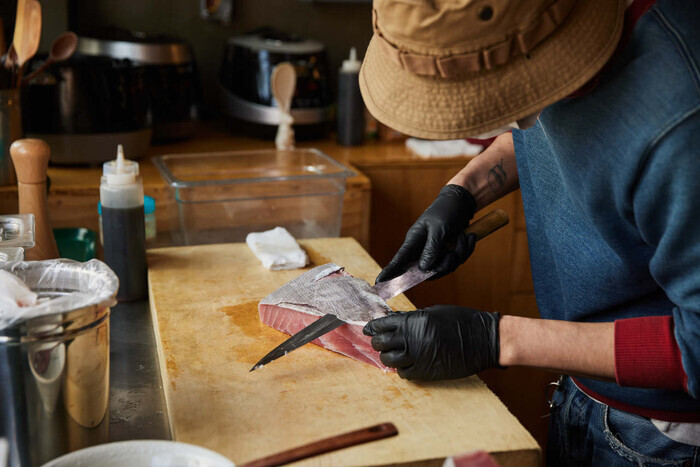
The flavors of a restaurant’s food often bear a resemblance to its owner — and Katabuta’s poke dishes were reminiscent of Kwon’s way of speaking: firm on the inside, but not overbearing.
They’re made by placing pickled raw tuna on rice seasoned with soy sauce and other spices, with finely chopped green onions or furikake (a Japanese condiment sprinkled on rice) topping it off. The resulting dish has flavor thanks to the spices, but it’s also quite filling on account of the tuna. Even though the fish is raw, it goes down easily with the rice.
Koreans are familiar with the dish hoedeopbap, which is a mix of raw fish with rice and vegetables. But the flavor of foreign soy sauce is curiously new, with the way it curls around the tip of the tongue.
Seemingly familiar yet new: that’s the taste of Samgakji in 2022.
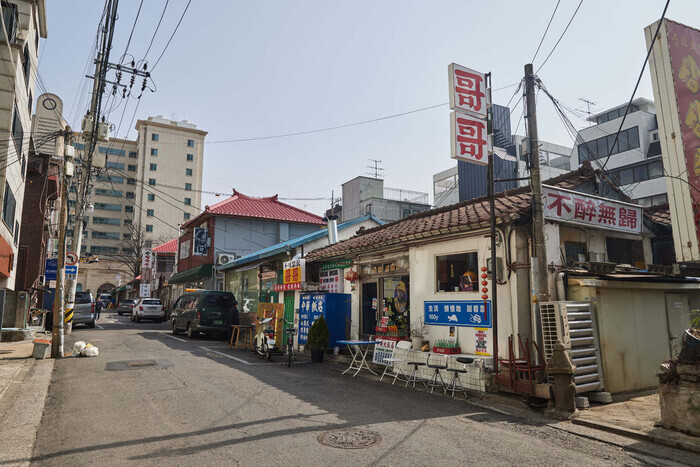
It’s a common feature shared by the restaurants that have opened around Samgakji Station in the past year or two: dishes with flavors that are familiar but new. That aspect has earned the Samgakji area a reputation as a neighborhood with a lot of “exotic” restaurants.
But the presence of so many exotic restaurants is the result of people happening to reach similar conclusions. What’s important is the real reason behind their opening: their owners realized that in this day and age, you need to have a “concept” to build your business around if you want to create the kind of trendy eatery that people flock to.
Good examples of this can be found in Gege and Hieutu, both of which started in Samgakji and have since succeeded with branches opened in major department stores like The Hyundai.
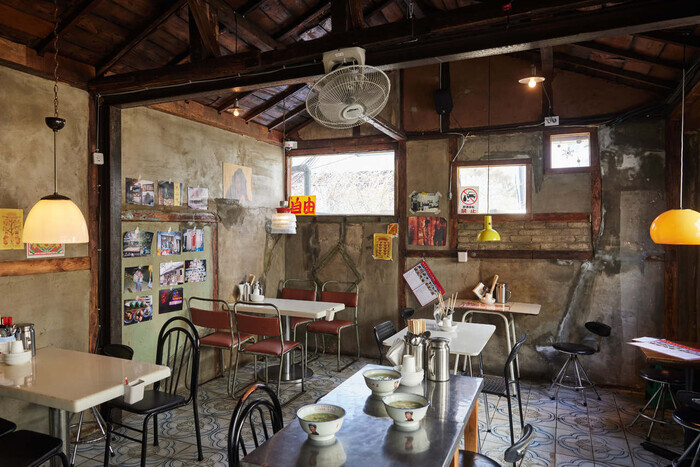

The interior at Gege is the kind of Hong Kong style seen in the movie “Chungking Express” — but the people responsible for it have never actually been to Hong Kong. Friends of the owner, including some design majors, recreated images of ’90s-era China and Hong Kong that they had found on Pinterest and other social media.
These days, the chefs at classy restaurants play an additional role as creative directors for individual restaurant brands. From instinct and experience, they know that the visual style elements are every bit as important as the flavor of the food going into people’s mouths.
Mongtan is a barbecue restaurant so popular that it’s become notoriously difficult to get a seat there. Its success comes thanks to its beef ribs, which are a uniquely arranged version of the traditional grilling ribs. Flavor still matters — but how a dish photographs has also become a key element in dining.
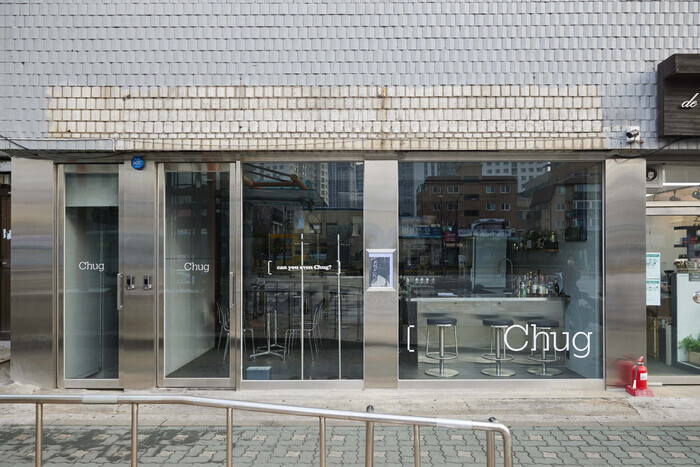
I spoke with the owners of six different restaurants for this piece, and they had two things in common: they were all 35 or younger, and their current restaurant wasn’t their first.
The owner of Chug, a natural wine bar by Samgakji Station, had previously run a restaurant in the Yeonnam neighborhood of Seoul’s Mapo District. Nam Joon-young, the owner behind Gege and Hieutu, started his business after traveling to Korea from Australia, where he had been involved in the food and beverage industry.
It made sense that these young and experienced people would turn their attention to Samgakji: it’s an excellent location.
As a major subway transfer hub, it is accessible to younger people. It’s located at the heart of Seoul, which makes it convenient for older customers with purchasing power.
A lot of large apartment complexes have also been built across the street in the Hyochang neighborhood. The area boasts quite a few big workplaces that provide corporate card access, including the Ministry of National Defense, the Amorepacific head office, and Samil PricewaterhouseCoopers.
The commercial area has taken on particular life with the completion of the Amorepacific headquarters, which has a lot of young employees who are keenly attuned to shifting trends.
“Even when places are under construction, I’ll save them on my map. Once they hang their sign, I DM them on Instagram to ask when they‘re opening,” said Won Min-jae, a 30-year-old who works at Samgakji. “Because I know, before long, the restaurant will become famous.”
In other words, some restaurants are turning into the hottest new thing as soon as they open their doors.
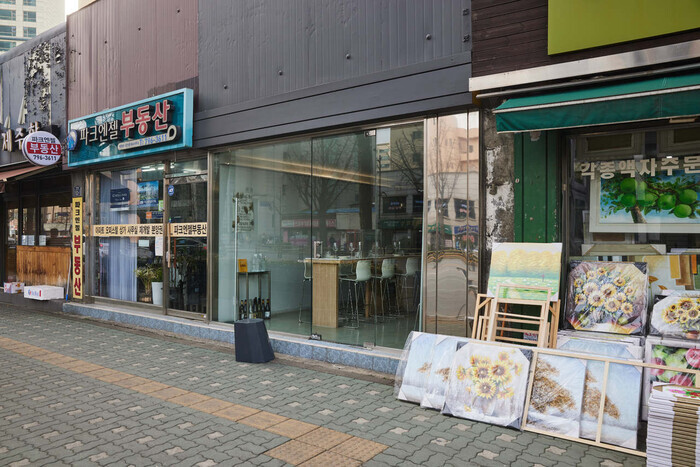
All of these trends come together at a place owned by another young chef: Hari, located near the Yongsan Fire Station across the street from Yongridan Road.
Hari is run by 33-year-old Jeong Jong-hyeok, who worked at the Michelin three-star restaurant Yannick Alleno in France and gained experience as a sous-chef at L’Amant Secret, a restaurant at the L’Escape Hotel in Seoul. He went on to open his own restaurant on Hangang Road — a place that doesn’t even have a sign.
The restaurant boasts every element of the recent formula for restaurant success: an interior well suited to Instagram posts, tasty and trendy natural wines and other beverages, and side dishes boasting high-quality flavor, prepared by a chef trained in fine dining.
Hari has no sign up to announce itself. Jeong explained his bold idea of opening a new restaurant without a signboard.
“We’re on the side of a major road, and I thought people driving by would see a restaurant with its lights on and no sign up and become curious,” he said.
He wasn’t wrong, but it was a youthful decision that would not be easy to put into actual practice. In the end, his ambition won the day: these days, those hoping to have a drink at Hari on a weekend need to make reservations two weeks in advance. Jeong had a hit on his hands.

“They’re calling the place ‘Seoul’s last So-and-so-ridan Road.”
Every success story has its dark side — and there was a sense of that in the story shared by Yu Yeon-ju, the 35-year-old owner of the café Quartz, which lies across the street from Hari.
Yu roasts the beans herself in one corner of the café. She’s enough of a coffee aficionado that she makes lattes with her own milk that she’s condensed herself using a condenser.
Seeing the beautiful building on Hangang Road, she was captivated. She rented a space there and opened up Quartz around two years ago.
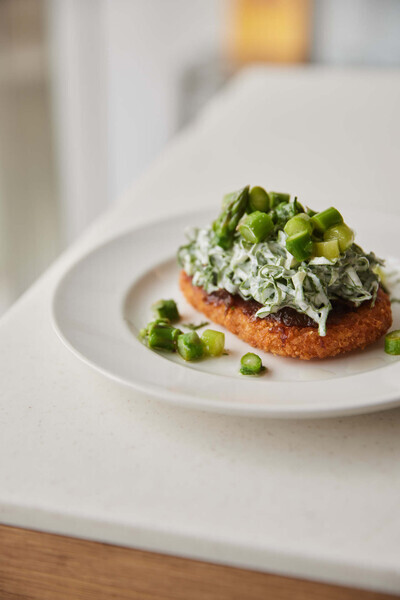
Since then, lots of new places have opened up around Samgakji, while real estate speculators have gotten their fingers in the pie. Rents have soared.
But that isn’t what’s bothering Yu. What bugs her, she said, is that some of the customers aren’t interested in the flavor of the coffee she takes so much trouble to brew up.
“There are people who make reservations and come in from another city to drink our coffee, but there are others who just take a picture to upload and then toss it out,” she explained. “I’m not sure what to think about that.”
Her story describes the dilemma of the owner of an up-and-coming restaurant in an up-and-coming neighborhood. What one person has gambled their youth to create becomes something for other people to casually consume.
“I’m constantly asking myself, ‘What comes next?’” she said, her voice sounding a resigned tone. “What do I have to do to get people to continue to visit once this trend has passed?”
Will Yongridan Road really be Seoul’s last “So-and-So-ridan Road?” Will the young restaurant owners I spoke to today end up being overtaken by some other neighborhood as the vast waves of the trends continue to roll?
Judging from what I heard from people during my visit about premiums going up by 50 million won — around US$40,000 — in the space of three months, that may be the case. That’s the fear: gentrification.
But one thing is clear: the young restaurant owners here recognize reality, they respect the neighborhood, and they’re preparing for the future.
Lee Myeong-jin, the manager of Chug, may run an elegant establishment, but he also shared his respect for the consummate management mastery of the employees at the more down-to-earth Nopowon Codfish Soup. Yu Yeon-ju of Quartz said she hopes to remain in this location somehow, provided it doesn’t get redeveloped.
And so, the popularity and the different flavors of Yongridan Road restaurants will continue, for now — at least until Kwon Deok closes his restaurant to pursue his still-living dream of moving to Hawaii.
By Park Chan-yong, columnist
Please direct questions or comments to [english@hani.co.kr]

Editorial・opinion
![[Column] When ‘fairness’ means hate and violence [Column] When ‘fairness’ means hate and violence](https://flexible.img.hani.co.kr/flexible/normal/500/300/imgdb/original/2024/0516/7417158465908824.jpg) [Column] When ‘fairness’ means hate and violence
[Column] When ‘fairness’ means hate and violence![[Editorial] Yoon must stop abusing authority to shield himself from investigation [Editorial] Yoon must stop abusing authority to shield himself from investigation](https://flexible.img.hani.co.kr/flexible/normal/500/300/imgdb/original/2024/0516/4417158464854198.jpg) [Editorial] Yoon must stop abusing authority to shield himself from investigation
[Editorial] Yoon must stop abusing authority to shield himself from investigation- [Column] US troop withdrawal from Korea could be the Acheson Line all over
- [Column] How to win back readers who’ve turned to YouTube for news
- [Column] Welcome to the president’s pity party
- [Editorial] Korea must respond firmly to Japan’s attempt to usurp Line
- [Editorial] Transfers of prosecutors investigating Korea’s first lady send chilling message
- [Column] Will Seoul’s ties with Moscow really recover on their own?
- [Column] Samsung’s ‘lost decade’ and Lee Jae-yong’s mismatched chopsticks
- [Correspondent’s column] The real reason the US is worried about Chinese ‘overcapacity’
Most viewed articles
- 1China calls US tariffs ‘madness,’ warns of full-on trade conflict
- 2[Column] US troop withdrawal from Korea could be the Acheson Line all over
- 3[Editorial] Yoon must stop abusing authority to shield himself from investigation
- 4[Column] When ‘fairness’ means hate and violence
- 5[Column] How to win back readers who’ve turned to YouTube for news
- 6US has always pulled troops from Korea unilaterally — is Yoon prepared for it to happen again?
- 7[Book review] Who said Asians can’t make some good trouble?
- 8Naver’s union calls for action from government over possible Japanese buyout of Line
- 9Could Korea’s Naver lose control of Line to Japan?
- 10[Editorial] Korea must respond firmly to Japan’s attempt to usurp Line